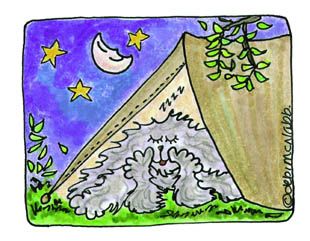- Home
- Programs
- International CyberFair
- Program Categories
- 5: Local Attractions (Natural and Man-Made)
Category 5: Local Attractions (Natural and Man-Made)
 |
|
Design a website and/or create a video story that showcases local natural and man-made attractions (e.g. rivers, oceans, mountains, museums, zoos, parks, camp grounds).
The theme for
CyberFair 2024 is COLLABORATE & Unite!
Let's unite to protect our communities, our environment, our
culture, our health, our animals, and our future.
"In collaboration we find strength, support, and the power to overcome any
challenge. Magic happens when we collaborate with an open heart and a shared
vision."
~Unknown
B: Learning Objectives:
- Students will develop geographic literacy through an awareness of place...the dominant natural and man-made landscape features of their communities. (Natural physical characteristics include land forms, water bodies, soils, natural vegetation and animal life.)
- Students will understand human events by first understanding the characteristics of the places in which these events occurred.
- Students will be able to identify local natural and man-made attractions and explain their origin and importance.
C: Discussion Questions:
- What physical features such as rivers, water, valleys or hills form a natural border or boundary for your community?
- What physical characteristics and natural resources have attracted people to your community?
- What are the man-made attractions in your area?
- How many people visit your area?
- Who are they and where do they come from? How long do they stay?
- What kind of impact do they have on your community?
- How are they spending their money?
- Do the visitors add money to the local economy or does it cost more than they spend to accommodate them?
- Is your local community dependent upon these visitors?
- What would happen if they stopped coming?
D. Suggested Starter Activities:
- View past projects produced by students in this category.
- List and classify reasons why people students know have chosen to move to your community. Students can find newspaper articles and/or advertisement which represent the different attractions of the area.
- Help students to classify responses into major categories. Possible categories are: climate, employment, educational opportunities, entertainment.
- Distribute magazines and newspapers. Have the students work in small groups to scan the materials for articles, pictures and ads which relate to each of the categories identified.
- Investigate the different attractions tourists visit, such as zoos and museums.
- Students can develop a travel guide describing the various attractions that would interest a tourist to the community.
E: Examples of Projects
-
Ár
gCeantar - Our Region
Inver National School
(Mayo, Co, Ireland, 2001) -
Celebrating Our Heritage
Martel Elementary
(Lewiston, Maine, USA, 2001) -
A Bend in the River
Dakota Meadows Middle School
(Mankato, Minnesota, USA, 2000) -
A Bend in the River
Dakota Meadows Middle School
(Mankato, Minnesota, USA, 2000) -
Creamer's Field
Joy Elementary
(Alaska, USA, 1999) -
New Orleans Our Home Town
Immaculate Conception School
(Louisiana, USA, 1999) -
Around Santa Barbara
Hollister School
(California, USA, 1998) -
The Magnificent Moose Project
Anne Hopkins Wien Elementary School
(Alaska, USA, 1998) -
World Port Los Angeles and the Surrounding Area
Dodson Middle School
(California, USA, 1998) -
Terry the Prairie Dog
Village Elementary School
(Kansas, USA, 1998) -
The Singapore Zoological
Adventure
The Chinese High School
(Singapore, Singapore, 1998) -
Welcome to Cape Town
Cape Town High School
(Western Cape, South Africa, 1996) -
Lansing - Making it Happen
St. Martha Elementary School
(Michigan, USA, 1996)